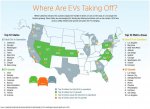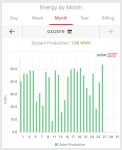- Joined
- Jan 28, 2013
- Messages
- 94,823
- Reaction score
- 28,342
- Location
- Williamsburg, Virginia
- Gender
- Male
- Political Leaning
- Independent
There is a National Electric Code that is used for electrical designs. Therefore it's your onus to prove that all states don't have the same design criteria. Looking forward to your input. With high probability I will state that an external outdoor disconnect has been part of the NEC since at least 2011, when I installed my system. It may be that there needs to be better training for firefighters.
All that said, electrical installations of any kind tend to be a tough nutshell for firefighters. That includes service entrances, outdoor electrical connection boxes, inside service panels, and even 120-Volt outlets. Check this out ---> This firefighter lived, but was severely injured.
Electric power safety for firefighters
From 2017, and btw I don't have any "onus" at all.
[h=3]Solar panels present firefighters with new challenges - FireRescue1[/h]
[url]https://www.firerescue1.com/firefighter.../197008018-Solar-panels-present-firefighter...
[/URL]
Feb 20, 2017 - But how do you do that when the power isn't coming from the utility grid? How do firefighters ventilate a roof when it's covered in solar panels ...
[h=3]Rooftop Solar Panels Are Great for the Planet—But Terrible for ... - Wired[/h]
[url]https://www.wired.com/2017/05/rooftop-solar-panels-great-planet-terrible-firefighters/
[/URL]
May 30, 2017 - In the last two decades, solar power has exploded. In 2009, only 30,000 American homes had solar panels; by 2013, that number had jumped to 400,000. With that growth, firefightershave had to contend with new threats to their safety—and that of the buildings and people they're charged with protecting.


